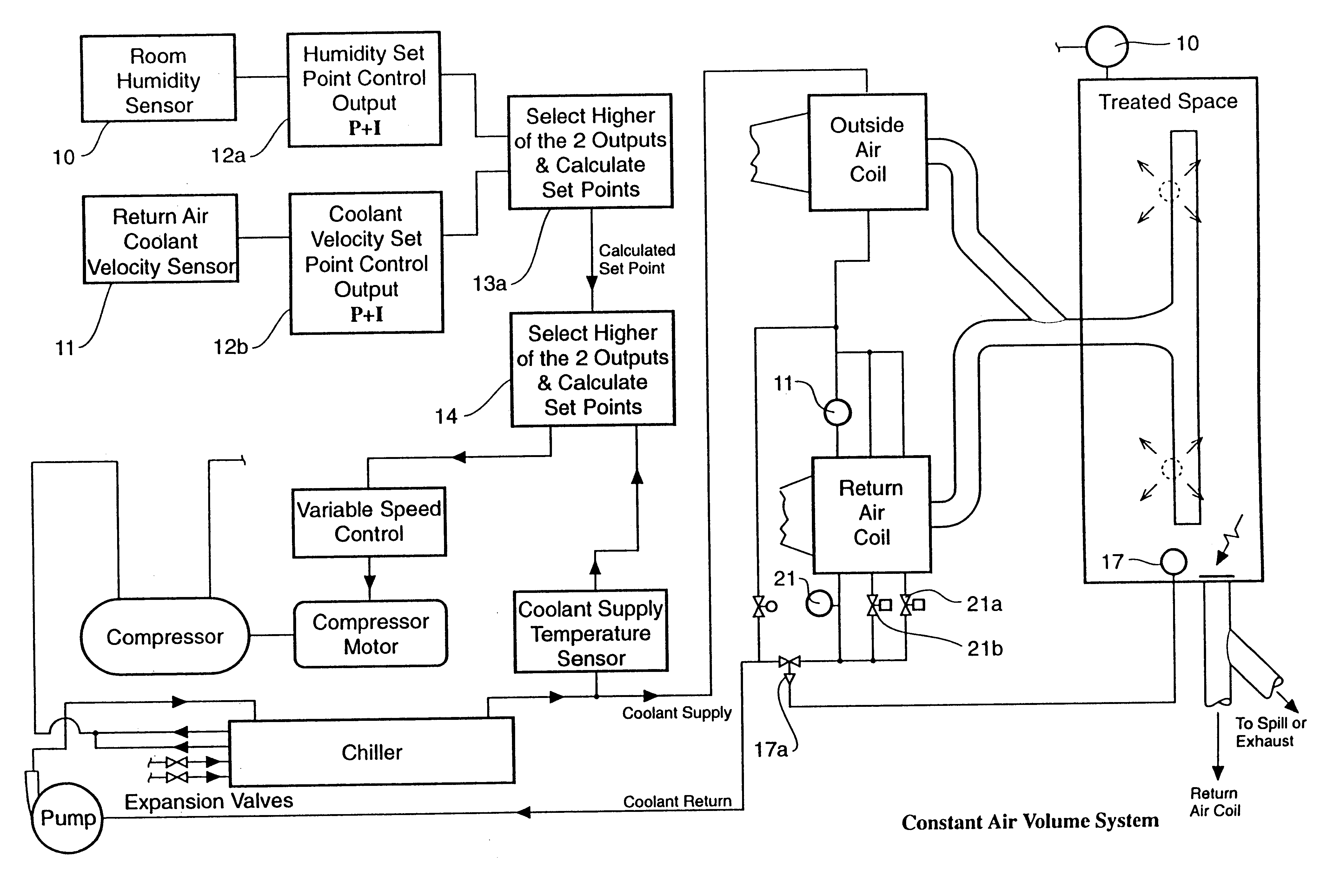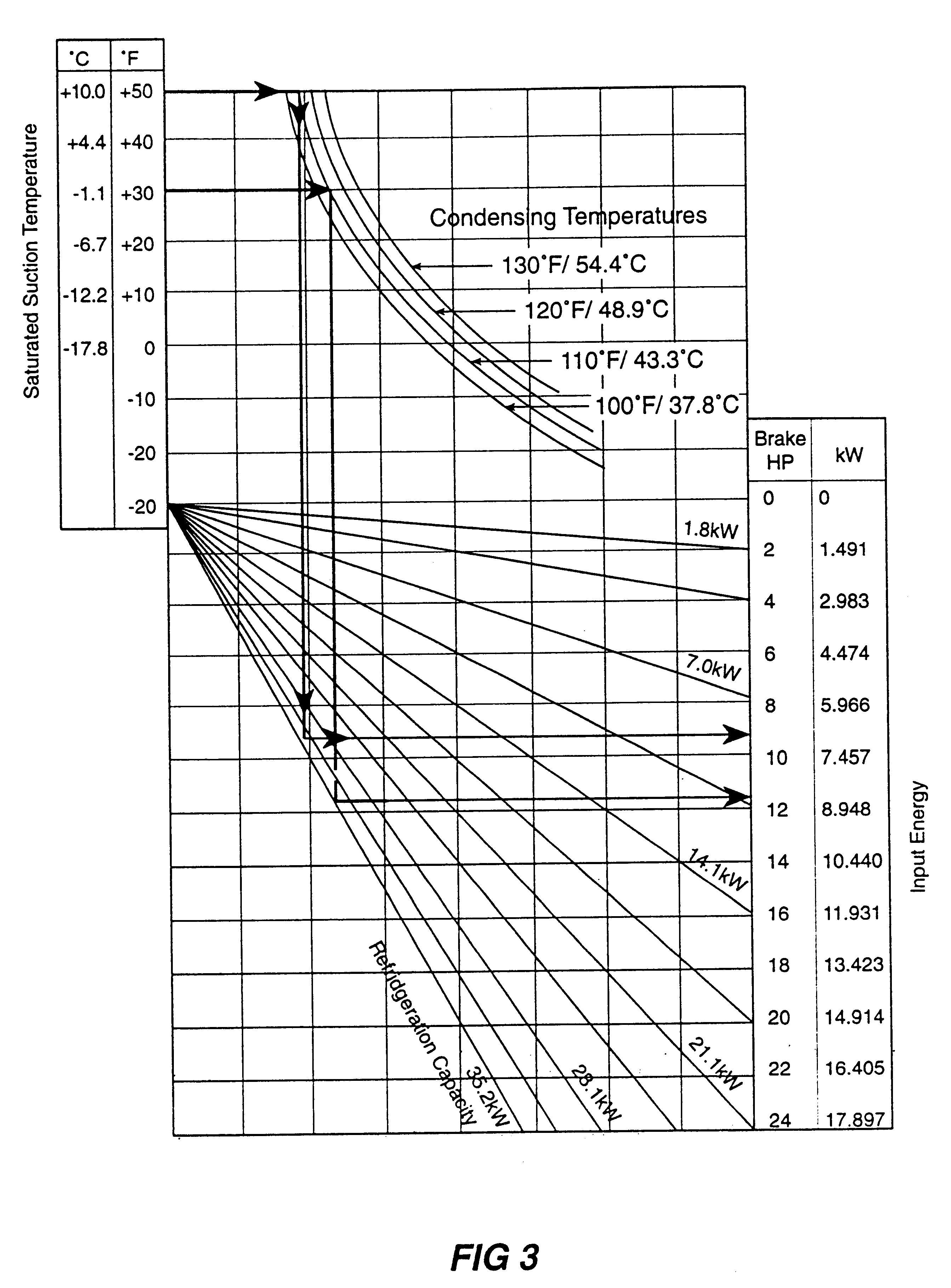Air conditioning control system for variable evaporator temperature
a control system and variable evaporator technology, applied in the field of air conditioning control system for variable evaporator temperature, can solve the problems of energy waste, complex incompatibility, undesirable effect of high coolant flow rising above known standards, etc., and achieve the effect of increasing the range of acceptable cooling coil performance between peak and minimum
- Summary
- Abstract
- Description
- Claims
- Application Information
AI Technical Summary
Benefits of technology
Problems solved by technology
Method used
Image
Examples
Embodiment Construction
Examples of the invention are described hereunder in some detail with reference to, and are illustrated in, the accompanying drawings and charts wherein:
FIG. 1(a) refers to the performance of the outside air coil in the arrangement of separate outside air and return air coils discussed in detail above on page 5 beginning with line 10. It is of advantage where a significant outside air percent of the supply air of about 15% or more is required. Otherwise a modified arrangement of outside air plus return air coil should be considered.
FIG. 1(b) represents a conventional outside air coil performance where the coolant supply flows in parallel to the outside air and return air coil.
FIG. 2 shows this pressure enthalpy diagram to demonstrate the higher evaporator temperature / pressure that can be achieved through this invention over numerous conditions over its operating range and thus substantially reduces the enthalpy difference across the compressor;
FIG. 3 is a compressor horsepower selec...
PUM
 Login to View More
Login to View More Abstract
Description
Claims
Application Information
 Login to View More
Login to View More - R&D
- Intellectual Property
- Life Sciences
- Materials
- Tech Scout
- Unparalleled Data Quality
- Higher Quality Content
- 60% Fewer Hallucinations
Browse by: Latest US Patents, China's latest patents, Technical Efficacy Thesaurus, Application Domain, Technology Topic, Popular Technical Reports.
© 2025 PatSnap. All rights reserved.Legal|Privacy policy|Modern Slavery Act Transparency Statement|Sitemap|About US| Contact US: help@patsnap.com



